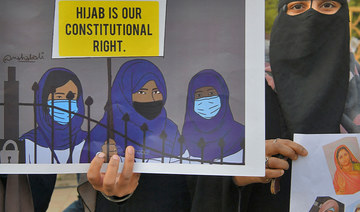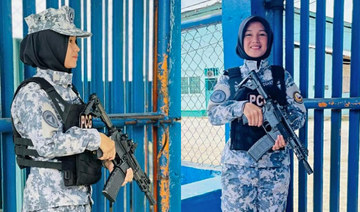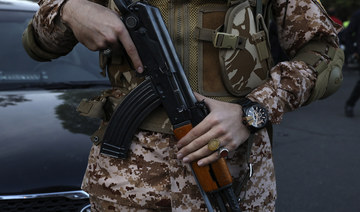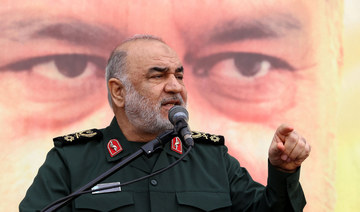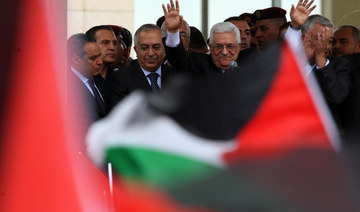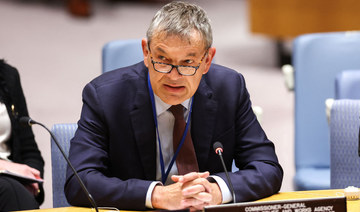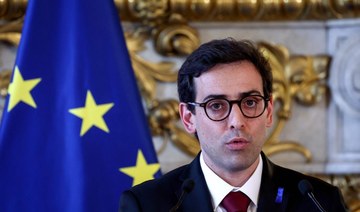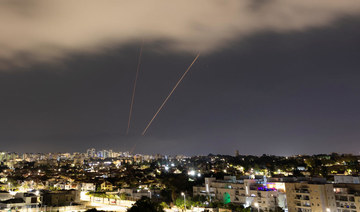NEW DELHI: When the students were barred last month from entering their classrooms and told not to wear hijab, a headscarf used by Muslim women, they began camping outside the all-girls high school.
The story cascaded across the Internet, drawing news crews to the front of the government-run school in Udupi district, in the southern Indian state of Karnataka.
Battle lines were swiftly drawn. The students began protesting outside the school gate and sat huddled in a group, reading their lessons. The school staff, which said the students were defying uniform rules, remained unmoved.
A month on, more schools have begun implementing a similar ban on hijabs, forcing the state’s top court to step in. It will hear petitions filed by the protesting students on Tuesday and rule on whether to overturn the ban.
But the uneasy standoff has raised fears among the state’s Muslim students who say they are being deprived of their religious rights. On Monday, hundreds of them, including their parents, took to the streets against the restrictions, demanding that students should be allowed to attend classes even if they are wearing hijab.
“What we are witnessing is a form of religious apartheid. The decree is discriminatory and it disproportionately affects Muslim women,” said A. H. Almas, an 18-year-old student who has been part of the weeks-long protests.
So far several meetings between the staff, government representatives and the protesting students have failed to resolve the issue. The state’s education minister, B. C. Nagesh, has also refused to lift the ban. He told reporters Sunday that “those unwilling to follow uniform dress code can explore other options.”
For many Muslim women, the hijab is part of their Islamic faith. It has for decades been a source of controversy in some western countries, particularly in France, which in 2004 banned it from being worn in public schools. But in India, where Muslims make up almost 14 percent of the country’s near 1.4 billion people, it is neither banned nor is its use restricted in public places.
In fact, women wearing hijab are a common sight in India, and for many of them, it symbolizes religious identity and is a matter of personal choice.
Because the debate involves alleged bias over a religious item worn to cover hair and maintain modesty, some rights activists have voiced concerns that the decree risks raising Islamophobia. Violence and hate speech against Muslims have increased under Prime Minister Narendra Modi’s ruling Hindu nationalist party, which also governs the Karnataka state.
“Singling out hijab for criticism is unfair and discriminatory. Those opposing it are on record decrying secularism and for openly espousing majoritarianism,” said Zakia Soman, founder of a Muslim women’s group, the Bharatiya Muslim Mahila Andolan.
Others contend it underscores the potential isolation and marginalization of Muslims who feel Modi and his Hindu nationalist party are slowly isolating them, compounding an already growing unease felt by the minority community, in a multicultural country that has guarantees of religious freedom enshrined in its constitution.
“What we are seeing is an attempt to invisibilize Muslim women and push them out of public spaces,” said Afreen Fatima, a New Delhi-based student activist. She said the ban is the culmination of a growing climate of hate against Muslims “which has now manifested itself in the physical realm.”
The protests have drawn public condemnation, with the hashtag #HijabIsOurRight circulating widely on social media, but also led to a rather unexpected pushback.
For the last week, some Hindu students in the state have started wearing Saffron-colored shawls, a symbol of Hindu nationalist groups. They have also chanted praises to Hindu gods, while protesting against the Muslim girls’ choice of headgear, signifying India’s growing religious faultlines and bitter tensions between the country’s Hindu majority and its large Muslim minority.
The events have prompted the state government to ban clothes it said “disturb equality, integrity and public order” and some high schools to declare a holiday to avoid communal trouble.
On Monday one of the schools yielded partially and allowed its Muslim students to attend class with a hijab but made them sit in separate classrooms. The move was heavily criticized, with Muslim students alleging the staff of segregating them on the basis of faith.
“It is humiliating,” said Almas. “How long are we going to accept that citizens can be stigmatized because of their religion?”
In India, wearing hijab bars some Muslim students from class
https://arab.news/nkr5j
In India, wearing hijab bars some Muslim students from class
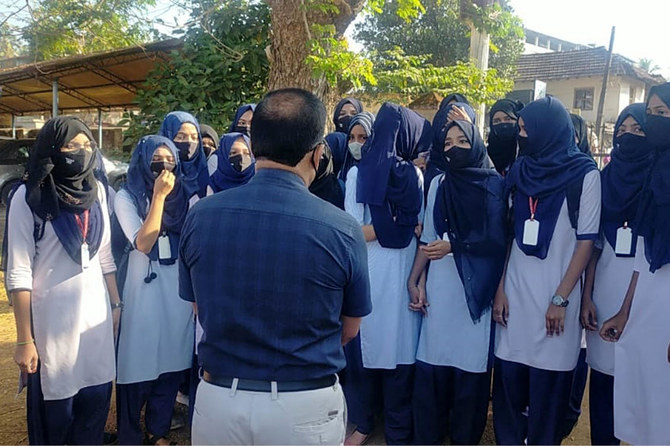
Cameron tells Netanyahu UK will not ban IRGC: Report
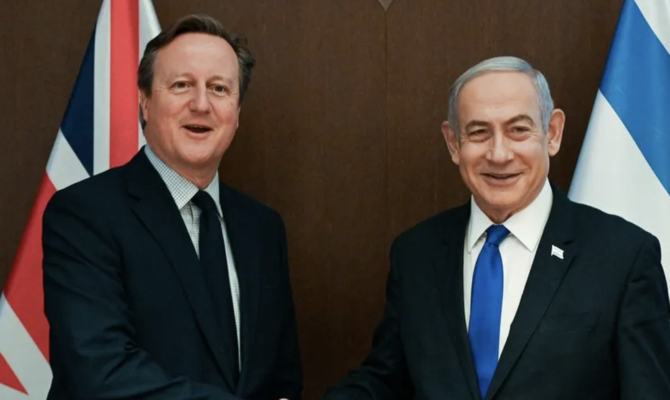
- Stance relayed during face-to-face talks between British FM, Israeli PM Wednesday
- ‘We need to be able to pick up the phone. If we proscribed them it would not help the situation’
LONDON: The UK will not proscribe Iran’s Islamic Revolutionary Guard Corps as a terrorist organization, the Daily Telegraph reported on Thursday.
The stance was reportedly relayed by UK Foreign Secretary David Cameron during a face-to-face meeting with Israeli Prime Minister Benjamin Netanyahu and Foreign Minister Israel Katz on Wednesday.
The Israeli government reportedly requested that the UK ban the IRGC following Iran’s drone and missile attack last week.
But Cameron, in what a source called a “blunt” response, told Netanyahu and Katz that doing so would hinder London’s ability to communicate with Tehran.
“We need to be able to pick up the phone. If we proscribed them it would not help the situation,” the source reported Cameron as saying.
If the IRGC were to be proscribed in the UK, it would make membership of it, attending its meetings, displaying its symbols or campaigning for it in the country illegal.
The move has been considered by the UK government for over a year, but Home Office officials have long warned that doing so would sever one of the few remaining diplomatic channels with Tehran. Instead, the IRGC has been sanctioned by the UK government on several occasions.
The US, which has banned the IRGC, has also suggested that the UK should proscribe it. The group’s navy was recently included in a new set of joint sanctions issued by London and Washington.
US to oppose Palestinian bid for full UN membership
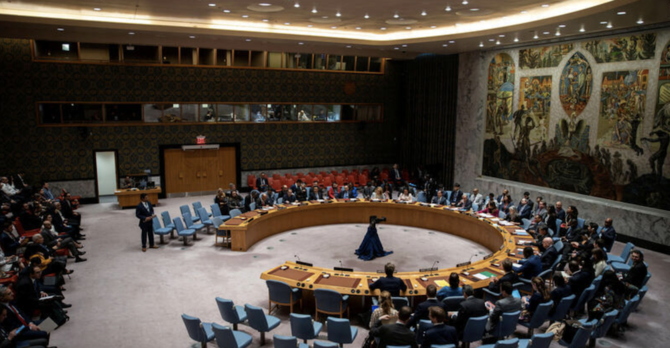
- 15-member council is scheduled to vote on a draft resolution
- Palestinians currently non-member observer state, de facto recognition of statehood
NEW YORK: The US will on Thursday vote against a Palestinian request for full United Nations membership, a US official told Reuters, blocking the world body from effectively recognizing a Palestinian state.
“It remains the US view that the most expeditious path toward statehood for the Palestinian people is through direct negotiations between Israel and the Palestinian Authority with the support of the United States and other partners,” the US official said.
The 15-member council is scheduled to vote on a draft resolution that recommends to the 193-member UN General Assembly that “the State of Palestine be admitted to membership of the United Nations.”
A council resolution needs at least nine votes in favor and no vetoes by the US, Britain, France, Russia or China to pass. Diplomats say the measure could have the support of up to 13 council members, which would force the US to use its veto.
“We have long been clear that premature actions in New York, even with the best intentions, will not achieve statehood for the Palestinian people,” the US official said.
The Palestinians are currently a non-member observer state, a de facto recognition of statehood that was granted by the UN General Assembly in 2012. But an application to become a full UN member needs to be approved by the Security Council and then at least two-thirds of the General Assembly.
The Palestinian push for full UN membership comes six months into a war between Israel and Hamas in Gaza, and as Israel is expanding settlements in the occupied West Bank.
“Recent escalations make it even more important to support good-faith efforts to find lasting peace between Israel and a fully independent, viable and sovereign Palestinian state,” UN Secretary-General Antonio Guterres told the Security Council.
“Failure to make progress toward a two-State solution will only increase volatility and risk for hundreds of millions of people across the region, who will continue to live under the constant threat of violence,” he said.
DIRECT TALKS
Israel’s UN Ambassador Gilad Erdan said Palestinians failed to meet the criteria to become a full UN member, which he outlined as: a permanent population, defined territory, government, and capacity to enter relations with other states.
“Who is the council voting to ‘recognize’ and give full membership status to? Hamas in Gaza? The Palestinian Islamic Jihad in Nablus? Who?” Erdan asked the Security Council.
He said granting full UN membership to the Palestinians “will have zero positive impact for any party, that will cause only destruction for years to come, and harm any chance for future dialogue.”
The UN Security Council has long endorsed a vision of two states living side by side within secure and recognized borders. Palestinians want a state in the West Bank, east Jerusalem and Gaza Strip, all territory captured by Israel in 1967.
The Palestinian Authority, headed by President Mahmoud Abbas, exercises limited self-rule in the West Bank. Hamas ousted the Palestinian Authority from power in Gaza in 2007.
Ziad Abu Amr, special envoy of Abbas, asked the United States: “How could this damage the prospects of peace between Palestinians and Israelis? How could this recognition and this membership harm international peace and security?“
“Those who are trying to disrupt and hinder the adoption of such a resolution ... are not helping the prospects of peace between Palestinians and Israelis and the prospects for peace in the Middle East in general,” he told the Security Council.
Abu Amr said full Palestinian UN membership was not an alternative for serious political negotiations to implement a two-state solution and resolve pending issues, adding: “However, this resolution will grant hope to the Palestinian people hope for a decent life within an independent state.”
After COVID, WHO defines disease spread ‘through air’
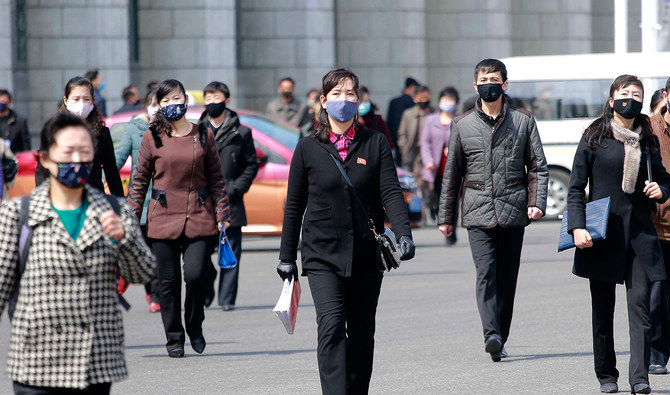
- Agencies have historically required high levels of proof before calling diseases airborne, which required stringent containment
- Past disagreements also centered around whether infectious particles were “droplets” or “aerosols” based on size
LONDON: The World Health Organization and around 500 experts have agreed for the first time what it means for a disease to spread through the air, in a bid to avoid the confusion early in the COVID-19 pandemic that some scientists have said cost lives.
The Geneva-based UN health agency released a technical document on the topic on Thursday. It said it was the first step toward working out how to better prevent this kind of transmission, both for existing diseases like measles and for future pandemic threats.
The document concludes that the descriptor “through the air” can be used for infectious diseases where the main type of transmission involves the pathogen traveling through the air or being suspended in the air, in line with other terms such as “waterborne” diseases, which are understood across disciplines and by the public.
Almost 500 experts contributed to the definition, including physicists, public health professionals and engineers, many of whom disagreed bitterly over the topic in the past.
Agencies have historically required high levels of proof before calling diseases airborne, which required very stringent containment measures; the new definition says the risk of exposure and severity of disease should also be considered.
Past disagreements also centered around whether infectious particles were “droplets” or “aerosols” based on size, which the new definition moves away from.
During the early days of COVID in 2020, around 200 aerosol scientists publicly complained that the WHO had failed to warn people of the risk that the virus could spread through the air. This led to an overemphasis on measures like handwashing to stop the virus, rather than focusing on ventilation, they said.
On Wednesday, Democrats in the Arizona state House failed to repeal a controversial ban on abortion that dates back to 1864 after they couldn’t muster Republican support.
By July 2020, the agency said there was “evidence emerging” of airborne spread, but its then chief scientist Soumya Swaminathan – who began the process to get a definition – later said, opens new tab the WHO should have been more forceful “much earlier.”
Her successor, Jeremy Farrar, said in an interview that the new definition was about more than COVID, but he added that at the beginning of the pandemic there was a lack of evidence available and experts including the WHO acted in “good faith.” At that time, he was head of the Wellcome Trust charity and advised the British government on the pandemic.
Farrar said getting the definition agreed among experts from all disciplines would allow discussions to begin about issues such as ventilation in many different settings, from hospitals to schools.
He compared it to the realization that blood-borne viruses like HIV or hepatitis B could be spread by medics not wearing gloves during procedures.
“When I started out, medical students, nurses, doctors, none of us wore gloves to take blood,” he told Reuters. “Now it is unthinkable that you wouldn’t wear gloves. But that came because everyone agreed on what the issue was, they agreed on the terminology… [The change in practice] came later.”
Reuters photographer wins World Press Photo of the Year with poignant shot from Gaza
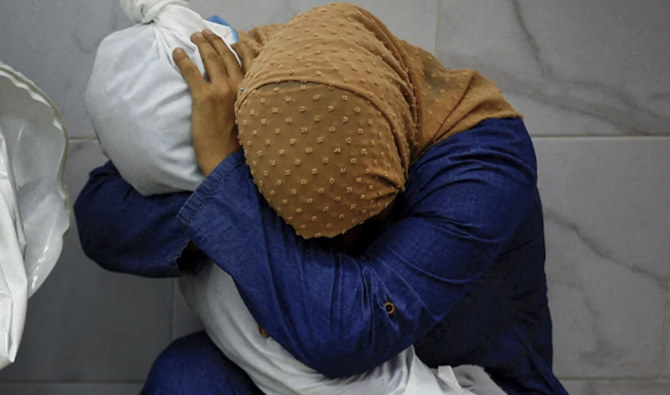
- Mohammed Salem won for heartrending photo of a Palestinian woman cradling the body of her young niece
- Inas Abu Maamar holds five-year-old Saly, killed along with her mother and sister when Israeli missile struck their home
PARIS: Reuters photographer Mohammed Salem captured this year’s prestigious World Press Photo of the Year award Thursday with a depiction of loss and sorrow in Gaza, a heartrending photo of a Palestinian woman cradling the body of her young niece. The photograph, taken in Khan Younis just days after Salem’s own child was born, shows 36-year-old Inas Abu Maamar holding five-year-old Saly, who was killed along with her mother and sister when an Israeli missile struck their home.
Salem, who is Palestinian, described this photo filed Nov. 2 last year, as a “powerful and sad moment that sums up the broader sense of what was happening in the Gaza Strip.”
The image ”truly encapsulates this sense of impact,” said global jury chair Fiona Shields, The Guardian newspaper’s head of photography. “It is incredibly moving to view and at the same time an argument for peace, which is extremely powerful when peace can sometimes feel like an unlikely fantasy,” she added.
The World Press Photo jury praised the shot’s sense of care and respect and its offering of a “metaphorical and literal glimpse into unimaginable loss.”
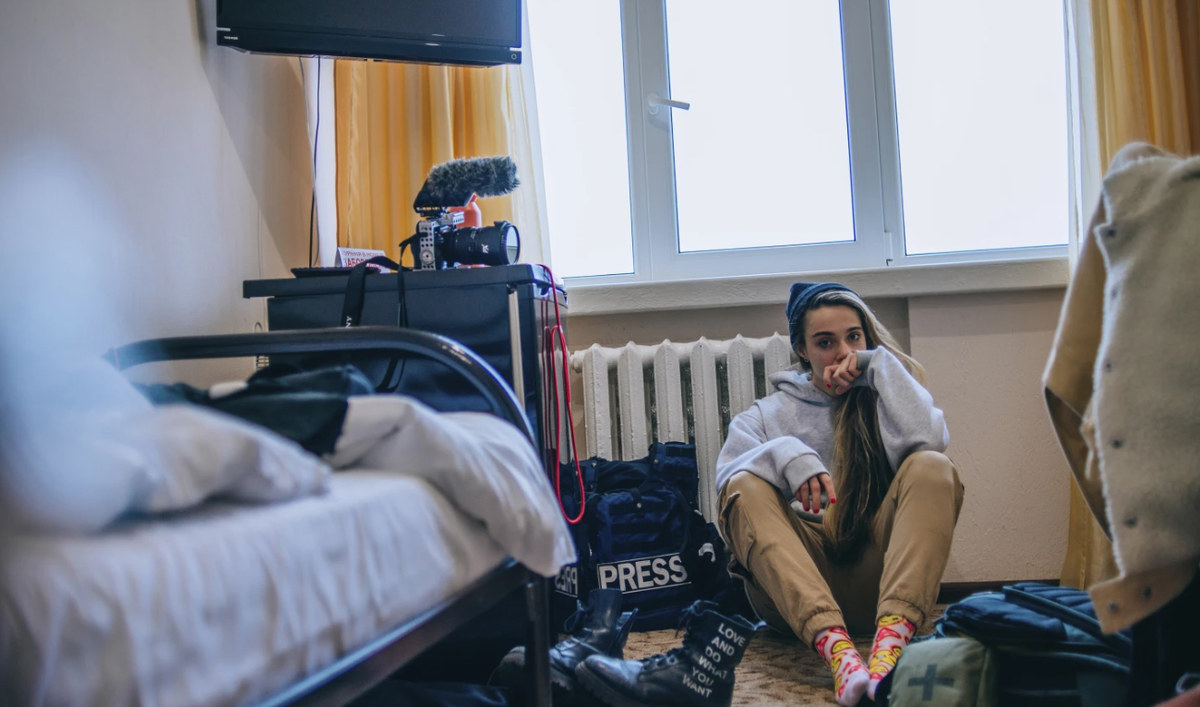
This is not the first time Salem has been recognized for his work on the Israeli-Palestinian conflict; he received a World Press Photo award more than a decade ago for another depiction of the human toll of conflict in the Gaza strip.
In the three other global categories announced Thursday, South Africa’s Lee-Ann Olwage won Photo Story of the Year for her touching series “Valim-babena,” featured in GEO magazine. The project focused on the stigmatization of dementia in Madagascar, a topic she explored through intimate portraits of “Dada Paul” and his family. Lack of public awareness surrounding dementia means that people displaying symptoms of memory loss are often stigmatized.
In the series, “Dada Paul,” who has lived with dementia for 11 years, is tenderly cared for by his daughter Fara. One of the standout images in the series shows him preparing for church with his granddaughter Odliatemix, capturing moments of normalcy and warmth amidst the challenges of dementia.
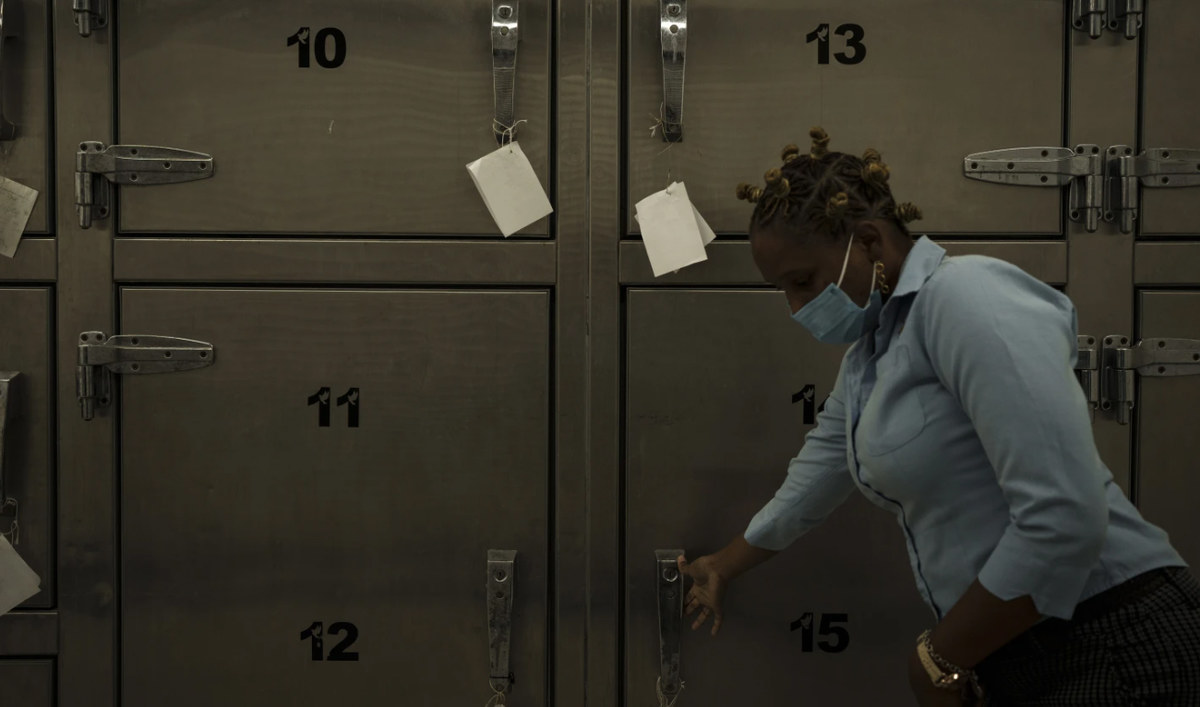
Photographer Alejandro Cegarra, a Venezuelan native who migrated to Mexico in 2017, won the Long-Term Project award for “The Two Walls,” published by The New York Times and Bloomberg. Cegarra’s project, initiated in 2018, examines a shift in Mexico’s immigration policies, which have moved from being historically open to enforcing strict regulations at its southern border. The jury said the photographer’s perspective as a migrant gave it a “sensitive,” human-centered perspective, according to a press release.
Julia Kochetova of Ukraine won the Open Format award for “War Is Personal.” The project stood out from coverage of the ongoing conflict by offering a personal look at the harsh realities of war. On a dedicated website, she merged traditional photojournalism with a diary-like documentary style, incorporating photography, poetry, audio clips and music.
The Associated Press won the Open Format award in the regional Africa category with the multimedia story “Adrift,” created by journalists Renata Brito and Felipe Dana. The story investigates the fate of West African migrants who attempted to reach Europe via a treacherous Atlantic route but ended up on a ghost ship discovered off Tobago. The team’s compelling use of photography, cinematography and detailed narrative, enhanced by expert design and multimedia elements, highlights the perils faced by migrants and the human stories behind global migration issues.
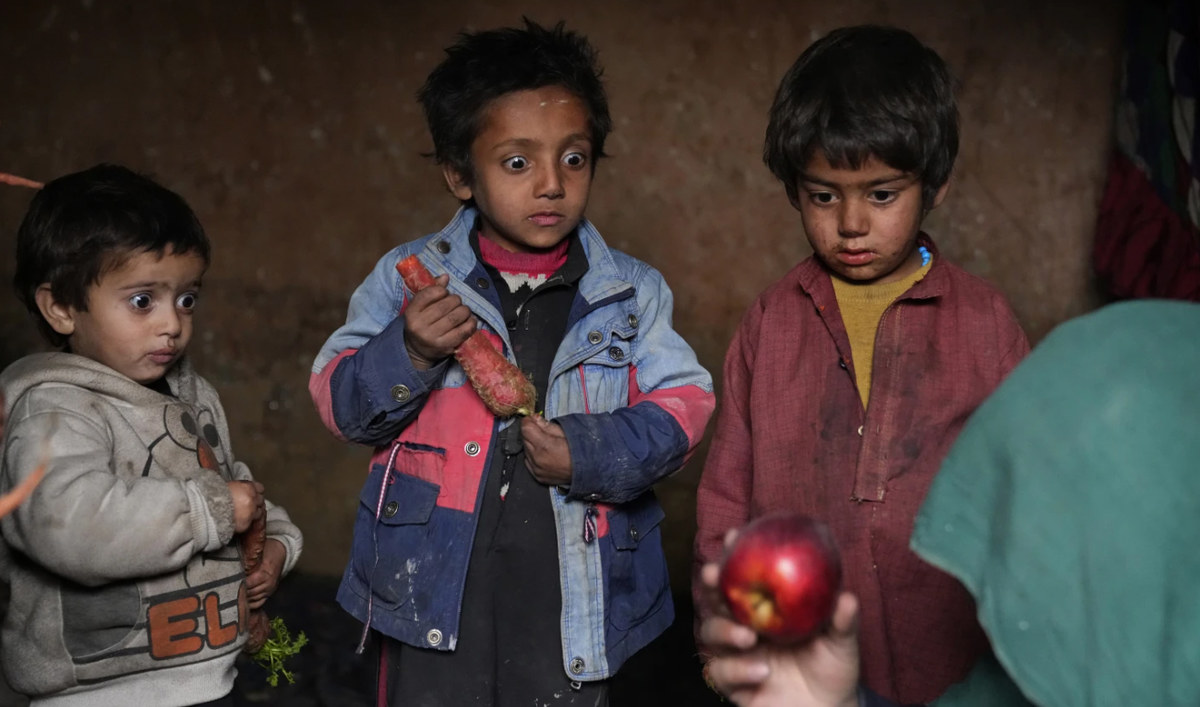
The Associated Press’ Ebrahim Noroozi won the Asia Stories award for his series “Afghanistan on the Edge,” which documents the country since the Taliban took over in August 2021.
World Press Photo is an independent, nonprofit organization based in the Netherlands, founded in 1955.
France’s Macron to meet Lebanon PM in Paris Friday: French presidency

- Lebanon has been without a president for more than a year after ex-head of state Michel Aoun’s mandate expired
- Former French colony is also in the grips of an unprecedented economic crisis
PARIS: France President Emmanuel Macron will meet Lebanon’s Prime Minister Najib Mikati and army chief Joseph Aoun on Friday in Paris, the French presidency said.
The announcement on Thursday comes as fears have increased in recent days of a regional escalation in the war between Israel and Hamas in Gaza.
Lebanon is grappling with a deep economic and political crisis.
That has been compounded by near-daily cross-border fire between Lebanon’s Iran-backed Hezbollah group and neighboring Israel ever since war erupted on October 7 between Israel and Hamas, a Hezbollah ally.
Hezbollah on Thursday said two of its fighters had been killed as Israel appeared to intensify strikes on south Lebanon following an attack by the Iran-backed group that wounded 14 Israeli soldiers.
Fears of a regional conflict have spiked in recent days after Tehran launched its first ever direct military attack on Israel late Saturday in retaliation for an April 1 air strike on the Iranian consulate in Damascus widely blamed on Israel.
Lebanon has been without a president for more than a year after ex-head of state Michel Aoun’s mandate expired, with its feuding factions repeatedly failing in parliament to elect a new leader.
The multi-confessional former French colony is also in the grips of an unprecedented economic crisis.
Mikati has been prime minister since 2021 but leads a caretaker government with limited powers.
Joseph Aoun, no relation to the country’s former president, has good relations with all sides in the country and is sometimes put forward as someone who could lead it out of political deadlock.
Macron has visited the country twice in recent years in a bid to help bring it out of crisis, but then in 2023 assigned the task to former foreign minister Jean-Yves Le Drian.



